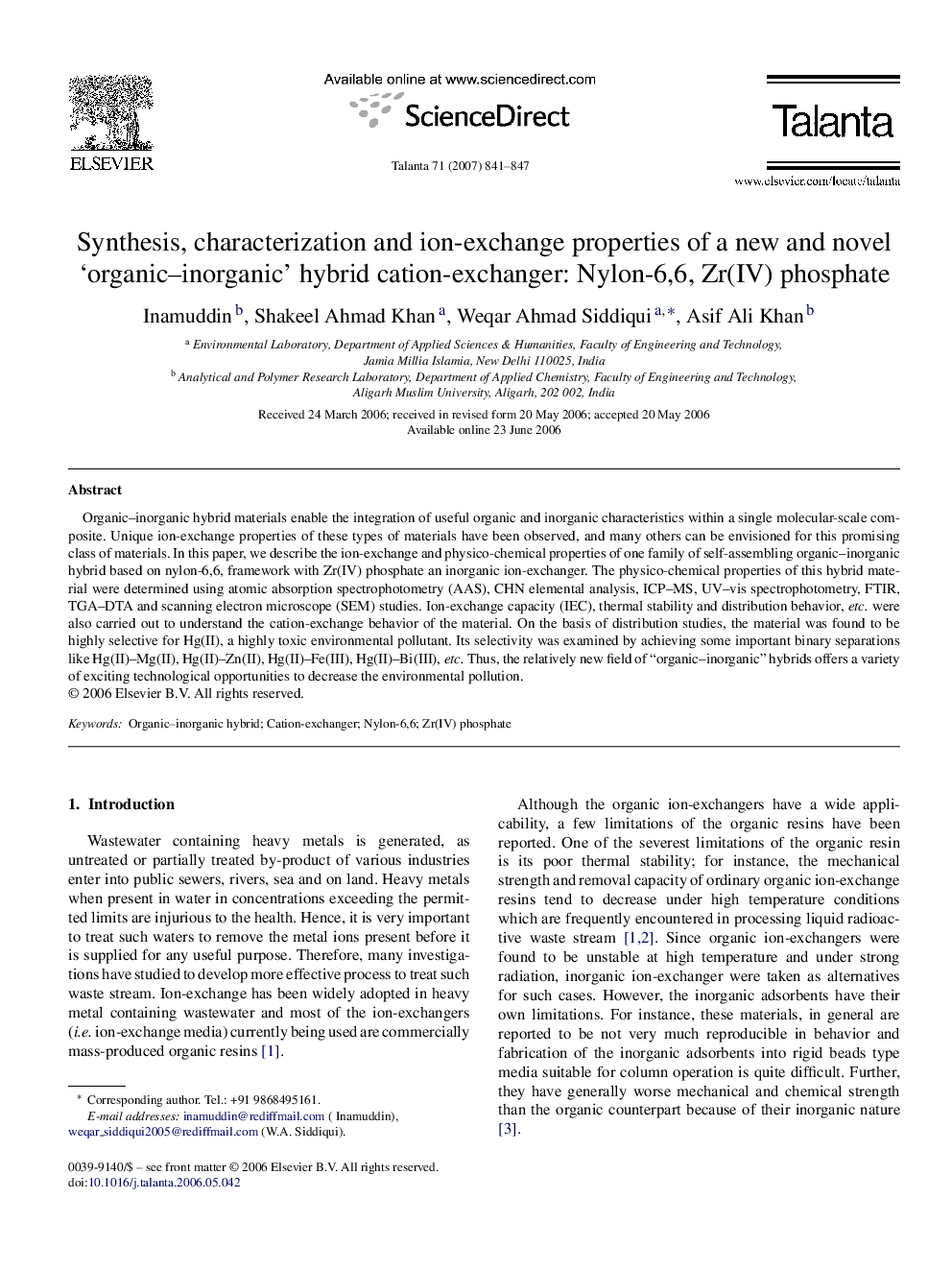| Article ID | Journal | Published Year | Pages | File Type |
|---|---|---|---|---|
| 1244262 | Talanta | 2007 | 7 Pages |
Organic–inorganic hybrid materials enable the integration of useful organic and inorganic characteristics within a single molecular-scale composite. Unique ion-exchange properties of these types of materials have been observed, and many others can be envisioned for this promising class of materials. In this paper, we describe the ion-exchange and physico-chemical properties of one family of self-assembling organic–inorganic hybrid based on nylon-6,6, framework with Zr(IV) phosphate an inorganic ion-exchanger. The physico-chemical properties of this hybrid material were determined using atomic absorption spectrophotometry (AAS), CHN elemental analysis, ICP–MS, UV–vis spectrophotometry, FTIR, TGA–DTA and scanning electron microscope (SEM) studies. Ion-exchange capacity (IEC), thermal stability and distribution behavior, etc. were also carried out to understand the cation-exchange behavior of the material. On the basis of distribution studies, the material was found to be highly selective for Hg(II), a highly toxic environmental pollutant. Its selectivity was examined by achieving some important binary separations like Hg(II)–Mg(II), Hg(II)–Zn(II), Hg(II)–Fe(III), Hg(II)–Bi(III), etc. Thus, the relatively new field of “organic–inorganic” hybrids offers a variety of exciting technological opportunities to decrease the environmental pollution.
